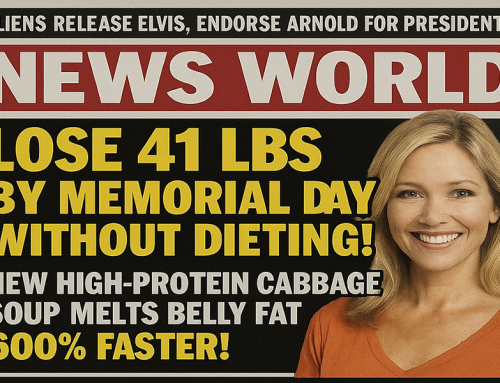A Review Of The Biggest Loser Netflix Documentary: Fit For TV
By Tom Venuto, Author of Burn the Fat, Feed the Muscle
When Netflix dropped its new three-part docuseries Fit for TV: The Reality of The Biggest Loser, I couldn’t help but think back to the one and only time I forced myself to sit through an episode of the show back in 2009.
I watched the season 8 premiere only so I could write a review – a review that became one of the most-read blogs I’ve published (2.4 million views).

In that article, I laid out the “pros and cons” of The Biggest Loser and explained that while there were flashes of inspiration and some redeeming qualities, the cons far outweighed the pros. I concluded that the show was exploitative, reckless, and harmful.
Now, more than a decade and a half later, the Netflix documentary confirms – and in some ways exceeds – the cons I listed, and the worst of what critics suspected. What’s revealed in Fit for TV makes it clear that the show was not just flawed, but damaging, both to the contestants who put their bodies and minds on the line as well as to the millions of viewers who were mislead about what it really takes to lose weight.
Episode 1: A Ratings Juggernaut Built on Desperation
The first episode of the docuseries explores the show’s origins. Producers JD Roth and Dave Broome admit they weren’t sure if it would be inspirational or comedic, but they knew they had struck TV gold when the ratings rolled in.
The show became one of NBC’s biggest hits, with spin-offs, merchandise, books, DVDs, and international licensing. By some estimates, the franchise ultimately generated not just millions but billions of dollars in revenue.
But how was this empire built? By finding contestants at their most desperate. As Roth himself put it, they weren’t looking for people who were overweight and happy; they wanted people who were overweight and unhappy. Contestants described joining the show as their “last hope,” their “one chance to save my life.” Ironically, participation almost cost contestants their lives.
One of the most disturbing stories comes from Tracy Yukich, a contestant on Season 8. In my original 2009 review, I described how she collapsed during the very first challenge: a one-mile race on the beach. At the time, all we knew was that she was airlifted by helicopter to a hospital.
The docuseries now reveals the diagnosis: rhabdomyolysis, or “rhabdo,” a condition where muscle tissue breaks down and releases proteins (myoglobin) into the bloodstream, potentially leading to kidney failure and even death.
This was no scripted drama – it was a real life-threatening medical emergency.
In the world of fitness, rhabdo became infamous when extreme CrossFit workouts triggered cases, and the community even joked about it with a cartoon mascot called “Uncle Rhabdo.” But make no mistake: rhabdo is no laughing matter. For Tracy, it nearly ended her life on day one of the show.
The fact that producers turned this near-death collapse into a dramatic storyline instead of a wake-up call about the dangers of extreme exercise says everything you need to know about their priorities.
And those dangers were not unknown – they were baked into the very premise of the show. Before filming even began, contestants were handed massive contracts and pressured to sign them in isolation, often without time to read them fully or seek legal counsel.
Tracy Yukich remembered asking for an attorney, only to be told she could lose her spot if she delayed. And Danny Cahill recalled noticing language that bluntly acknowledged contestants could die – with the producers and network shielded from any liability. In other words, the show anticipated the worst and made sure the risk fell entirely on the contestants.
Episode 2: Trainers as Stars, Contestants as Props
If episode one shows us how the spectacle was built, episode two takes us deeper into how the drama was manufactured. Former contestants describe training sessions that pushed them to the brink of collapse, emotionally and physically. Workouts often burned 6,000 calories or more per day. Calories consumed were sometimes reported as low as 800 per day.
That combination – severe calorie restriction plus excessive exercise – is about the worst possible formula physiologically. Research shows that extreme caloric restriction alone can slow metabolism, and excessive exercise alone can increase injury, but together they create a perfect storm: muscle loss, metabolic adaptation, and serious health risks.
Yet the trainers, Jillian Michaels and Bob Harper, became celebrities on the back of this system. Their “tough-love” approach often crossed the line into outright abuse. The Fit For TV doc showed the contestants being screamed at, insulted, and even humiliated on camera.
One contestant described Bob’s tirade during a treadmill workout as “abusive and triggering.” Jillian was known for getting in contestants’ faces and dropping F-bombs left and right. Here’s a couple of choice lines from Jillian captured in the doc:
To a contestant on the treadmill:
“Unless you faint, puke, or die, keep working!”
And to a contestant in the squat rack:
“I don’t care if you break your neck – keep going!”
Yes, it made good “reality” TV. But good coaching? Not even close. Can you imagine a trainer treating a client like that in the real world?
It wasn’t just the workouts. The show manipulated contestants emotionally. They were isolated from their families, sleep-deprived, surrounded by junk food during “temptation challenges” (one of the most deplorable parts of the show). They were also treated to pseudo-therapy sessions by trainers who had no credentials to dig into trauma.
As I continued watching each of the three Netflix episodes, my sympathy was with the contestants. Many of them had health issues, broken marriages, or lifelong battles with weight. They were willing to endure anything in the hope of transformation. But the show turned their pain into a spectacle and profited from it.
Episode 3: The Aftermath: Regain, Metabolic Damage, and Abandonment
The third episode looked at what happened after the cameras stopped rolling. This is where the true cost of The Biggest Loser becomes undeniable.
Studies and contestant testimonies confirm that almost all of them regained the weight they lost. A famous study published in Obesity (Fothergill et al., 2016) tracked Season 8 contestants and also found that their metabolic rates had crashed. Years later, their bodies were burning nearly 500 calories fewer per day than you would predict, a phenomenon called “persistent metabolic adaptation.”
Danny Cahill, who lost 239 pounds to win Season 8, ultimately regained nearly all of it. Within a few years, he had put back well over 100 pounds, and by 2018 he was just shy of his original 430 pounds. This is a sobering example of the unsustainability of the show’s methods and the difficulty of long-term weight maintenance.
Most dieters never experience this extreme level of metabolic suppression because most never combine starvation-level calories with hours of daily cardio. But the Biggest Loser contestants did – and they paid for it.
The documentary also highlights the show’s utter lack of aftercare. Contestants were thrown back into the real world with no structured training plan, no counseling on eating for maintenance, no ongoing moral support. One producer claimed that the network “couldn’t afford it.” The irony is staggering. This franchise was raking in billions, yet they wouldn’t invest in the one thing research has shown to dramatically improve long-term maintenance: ongoing support.
The Look AHEAD study, one of the most important long-term lifestyle intervention trials, proved that continued education, monitoring, and counseling are critical for keeping weight off. The Biggest Loser offered none of it. Contestants were expendable. When the show was over, they were left to fend for themselves
Today, because most contestants regained the weight, some of them have been trying GLP-1 drugs like Ozempic and Wegovy. These medications are proven to help with hunger control and weight loss and they’ve been life-changing for people with diabetes who have been living with obesity. But as I’ve said before, and as research supports, the real challenge comes when you stop. Without lifestyle and habit change, even after using effective drugs, the same maintenance hurdles are still there and so are the same depressing odds of weight regain.
The Bigger Picture: Ratings and Revenue vs. Health
It’s worth stepping back to remember just how big The Biggest Loser was. At its peak, millions tuned in weekly. The show spawned merchandise, international editions, diet books, fitness DVDs, protein powders, and more. By the franchise’s own claims, the revenue wasn’t just in the millions, it was in the billions.
And yet, for all the money made, for all the fame enjoyed by the trainers and producers, what did contestants get? Short-term weight loss, long-term regain, damaged metabolisms, and psychological scars. A few were able to parlay their appearance into speaking careers or inspiration for others. But for many, as contestant Suzanne Mendonca bluntly put it, the show was “the biggest mistake of my life.”
Beyond The Headlines
People and Time magazine both wrote reviews the day after the docuseries dropped highlighting some of the “most revealing moments”: the extreme calorie restriction, the junk food temptations, the screaming trainers, Tracy Yukich’s collapse, and the 2016 study showing regain and slowed metabolism. Those are indeed shocking.
But what I hope to add – building on my 2009 review and now confirmed by Netflix’s docuseries – is context. It wasn’t just that the show had “controversial moments.” It was that the very structure of the competition guaranteed unhealthy practices and serious consequences. It was that contestants were cast for desperation, manipulated for drama, deprived of proper care, and then discarded. And it was that millions of viewers were left with false expectations about what healthy weight loss looks like.
Conclusion: Entertainment at a Human Cost
In 2009, I concluded that while The Biggest Loser had some redeeming qualities, including accountability, competition, and inspiration, the negatives were overwhelming. After watching Netflix’s Fit for TV, I no longer see it as a matter of pros and cons. This was television that systematically harmed the very people it claimed to help.
A couple decades ago, I noticed that the Biggest Loser was definitely polarizing. Half the viewers said it was the worst thing that ever happened in the diet and exercise industry. The other half insisted that the show inspired them and started their successful weight loss journey.
But with hindsight – and now this documentary – more people are now saying, “I can’t believe I was a fan of that show.” My take has evolved too. Even with its supposed pros like the inspiration it provided to some, The Biggest loser is unredeemable and unforgivable. The show was toxic from day one. Jillian Michaels is toxic. Bob Harper doesn’t get a pass either.
The trainers and producers may defend themselves by saying it was all “just for TV.” But when TV leaves people metabolically broken, emotionally scarred, and publicly humiliated, while misleading millions of viewers about what healthy weight loss really looks like, that excuse doesn’t hold.
If you want real transformation, here’s the truth: sustainable lifestyle change, built on healthy exercise and nutrition habits plus long-term support, is the only way. Research proves it. Contestant stories confirm it. Quick fixes, crash diets, and “reality” TV – or social media theatrics – are not the answer.
The Biggest Loser made billions. But the human cost was even bigger.
Tom Venuto is the author of Burn the Fat, Feed the Muscle and Flexible Meal Planning For Fat Loss. He is also founder of the Burn the Fat Inner Circle – a support community for No-BS, all-natural body transformation with over 59,000 members since 2006.






As usual Tom, you were spot on with your original analysis of the show and it’s now been confirmed. My heart goes out to all of the damaged contestants. Thank you Tom for all the help you have provided to people over many years!
Thanks for posting Liz. I too hope the former contestants find a healthy sustainable balance in their life.
Bravo, Tom. I think that one episode you watched might have been the only one I ever watched, too. I clearly remember what I considered abuse and never watched another show.
I was a fairly new second-career personal trainer. I was infuriated at Jillian and Bob and lost all respect for them.
Thanks for your words.
Thanks for posting.
Very well written in depth analysis Tom!
thanks, and thanks for sharing too